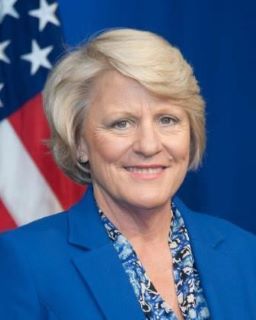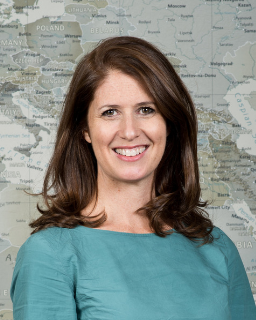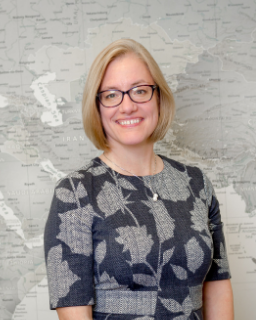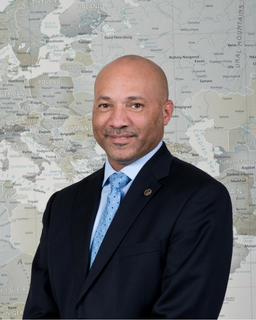
Future of Exchanges
Note from CPD: This collection of essays was originally published by Global Ties U.S.
Steering International Exchange & Public Diplomacy into 2021
By Katherine Brown, Ph.D., President and CEO, Global Ties U.S.
Like all of you, the Global Ties Network, which provides a nationwide infrastructure for U.S. public diplomacy programs, has endured a challenging year. We’re taking a minute to reflect on what we’ve learned about our virtual turn to help leverage technology to modernize international exchange programs for the long-term. We’re also thinking about technology’s limitations as we work to create a more diverse and inclusive field for greater participation of more foreign and American citizens.
We’ve seen this last year the resilience and innovation of U.S. institutions, cities, businesses and people, which will always be the sources of American soft power. We’ve also been reminded of the centrality of relationships and how important international exchanges are to help build the alliances and trust we need to solve transnational challenges, like a global pandemic.
We asked three Global Ties U.S. Board Members – Patricia Harrison, Robin Lerner and Dr. Christopher Washington – and one of our Advisory Council members – Ambassador Barbara Stephenson – to reflect on what we’ve learned, and how we’ll move forward. All of them are leaders in international exchange, international education, public diplomacy and foreign policy. I hope their essays provide you with even more to think about as you undergo your own reflections on how to steer the public diplomacy field into a brighter 2021.
Diplomacy in a Networked World

By Ambassador Barbara Stephenson, Vice Provost for Global Affairs, University of North Carolina at Chapel Hill, Global Ties U.S. Advisory Council Member
Exchange programs have long been recognized as a highly effective way to develop long-term relationships with emerging leaders. What I have seen from my own experience leading U.S. embassies and consulates is that exchanges can also be a powerful means to achieve immediate, high-priority mission goals. And as both exchanges and the nature of diplomatic work evolve, the potential impact of exchange programs only increases.
An exchange visit the U.S. Consulate in Belfast organized is still cited, nearly 20 years later, for its key role in overcoming long-standing sectarian divisions over policing and helping to usher in a new, more inclusive community-based policing order in Northern Ireland. It is fair to say that I, as Consul General, had no higher foreign policy priority than helping to usher in that new policing order, which was key to ensuring the success of the peace agreement the United States had helped broker. A thoughtfully designed and brilliantly executed exchange program created the shared understanding needed to move on to new, common ground. Exchanges matter – and they deliver, not just over the long term, but also, often, right away.
As the nature of diplomacy evolves to keep up with an increasingly networked world, exchanges are an ideal tool for finding partners and building networks to address shared challenges. When the challenge is addressing climate change or collapsing fisheries or how to establish global governance of cyberspace, exchange programs can work wonders to develop the connections needed to feed a rich and ongoing conversation among a large group of networked stakeholders dealing with “global commons” issues – that is, the growing list of issues that don’t live neatly within national boundaries or in a government minister’s portfolio.
With the recent imperative to shift exchanges to virtual, we have added a powerful new tool to our toolkit. Going forward, blending virtual with the in-person travel we all love will allow connections among exchange program participants to begin before departure and continue long after the trip concludes – and going virtual also has the potential to reach larger numbers and bring more stakeholders into the conversation and the search for common ground.
For my Foreign Service colleagues working in embassies and consulates, I encourage you to build exchange programs into your mission plan, from the ground up. Yes, exchanges are a great way to give a promising emerging leader a taste of America, but they can also be your best bet for building out your in-country network of partners to work on top mission priorities.
To the thousands of “citizen diplomats” who welcome visitors to their cities, never doubt that, in addition to being responsible, through your home hospitality in particular, for giving many visitors their most cherished memory of their time in the United States, you also contribute directly to the success of U.S. foreign policy in tangible, immediate – and enduring – ways.
Domestic Public Diplomacy

By Robin Lerner, President and CEO, Texas International Education Consortium
My nearly 20 years in public diplomacy have shown me that a country’s public diplomacy engagement is driven by its culture and aligned to what its society intrinsically values. I learned this firsthand in Baghdad in 2004 as I witnessed U.S. embassy staff brave public bombings and kidnappings to deliver books to schools and universities. I have never forgotten that U.S. commitment to feeding the hungry minds of a population cut off from free and free-flowing information. It’s true that if we try to compete with France on cultural engagement, we may not win. But try to compete with the U.S. on engagement around civics, civil society, and freedom of speech, and you will meet a formidable foe.
Why does this matter? Being aware of who we are allows us to engage our strongest assets – the people and organizations that make up our civil society and democratic systems. This is not a new concept – we have programs designed specifically to bring individual Americans into our public diplomacy – but as we consider the special moment in which we find our country, is it enough? The answer likely lies in how little most Americans know about public diplomacy and the opportunities that exist for them to participate.
The moment is now to go big or go home and make some changes. American civil society has captivated the world consistently over the past six months – all of our messy self-expression on display as we grapple with significant societal fractures. For good or bad, this country was built by the activism and ingenuity of its people, and that’s the story we must explain. Who best to do so than those diverse change-agents and local innovators that don’t normally find themselves on U.S Department of State programs. Let’s make a new goal that for every project implemented by a Washington-based organization, we fund two first-time, geographically-diverse grantees. Perhaps, an association of small-town mayors, a network of sustainable fashion entrepreneurs, or a Hispanic chamber of commerce. How do we do this? We tap into networks who have networks – Global Ties U.S., the World Affairs Councils of America, the League of Women Voters, YMCA/YWCA, state-based university consortia – to build new grantee capacity, and create a platform for ideas and volunteers. Let’s make public diplomacy about the American public and set a goal to double the number of organizations on U.S. Department of State-led public diplomacy programs. This effort will pay off in dividends simply in the number of people with an affinity for the U.S. Department of State and public diplomacy specifically.
Underpinned by the Global Ties Network and other international exchange-focused organizations, let’s engage our fellow Americans in communicating to the world how, in the face of deep divisions and disagreements, our country manages to transition government peacefully, send rockets into space, and create vaccines in record-breaking time. By involving us all, we are sharing what is most intrinsic to our culture and, in turn, creating an understanding of what public diplomacy is and does for this country – a true win-win.
Virtual Exchange 2.0 in 2021

By Patricia Marby Harrison, Ph.D., Director, Professional Exchanges, Global Programs, World Learning
It’s not every day that one lives through a paradigm shift. The last significant societal shift arguably happened with the creation of the “World Wide Web,” which changed how we shop, communicate, and do research. Even then there were stages, which we referred to as “1.0,” “2.0,” etc.
The international exchange community will remember 2020 as the year that Virtual Exchange 1.0 ended and 2.0 began. While virtual exchange had existed for several years, the necessity of Zooming forced by the pandemic drove the rest of us to virtual exchange in a hurry. By now we have figured out how to join a Webex session, how to angle our webcam, or how to navigate simultaneous interpretation. Sometimes it feels as if we have become more instructional technologists than program designers, logistics implementers, or citizen diplomats. We have been focusing on the technical skills for so long this year that perhaps at times we have lost sight of the ultimate goal – which is not simply to run webinars featuring subject matter experts, but to encourage mutual understanding.
What will Virtual Exchange 2.0 entail? I predict we will find and deploy new technologies that will enable us to convey a more authentic sense of presence and place for our participants and our communities. We can take our smartphones to site visits and give people real-time tours of the community. Apps such as Flipgrid, which enables participants to add graphics or provide written comments, or Mmhmm, which promotes “funner Zooming,” will enliven our virtual sessions. Or telepresence robots (essentially iPads on wheels, controlled remotely) may help us with the transition to hybrid (part virtual, part in-person) programs.
But it’s important not to get carried away by flashy toys: in the end, technology is only a tool by which we accomplish the essential goal of exchanges, to promote mutual understanding and build new networks for sharing information and pursuing common aims. And we want to remember not to leave behind those participants whose access to technology impedes them from participating in virtual exchanges.
The next stage of virtual exchange may require a return to the “art of programming,” to find more effective ways to facilitate conversation, increase interaction, and foster experiential learning on virtual platforms. Exchange implementers and partners can help international visitors overcome camera shyness and technology hiccups so they can participate freely, and we can encourage fewer or shorter presentations in favor of more discussion and interaction. More opportunities for participants to connect, share their expertise with each other as well as with Americans will cultivate the kind of intragroup unity and mutual learning that we have sought in our in-person programs.
It’s easy to see what has been lost in the absence of in-person programs. Experiential learning seems a challenge without the physical relocation to a new setting that travel provides. But virtual exchange has its benefits as well. Experiential learning is less about having a tangible experience, more about incorporating and applying new knowledge to one’s home context. Synthesis sessions, collaborations on a joint presentation to the group, or personal encounters that challenge assumptions can be just as effective in a virtual context. And ironically, in some ways virtual platforms provide a more direct connection to “ordinary Americans,” whether it is because of the equalizing effect of Zoom rectangles, the absence of nametags and tent cards, or the intimacy of seeing others in their living room or basement and meeting their family.
As the technology becomes more familiar, we exchange practitioners will be able to focus once again on the creativity needed to cultivate what Franklin Delano Roosevelt called “the science of human relationships,” to promote “the ability of all peoples, of all kinds, to live together and work together, in the same world, at peace.” Despite all the upheavals of 2020, perhaps because of them, the goal of exchanges remains as essential as ever.
What’s Next for the Future of Exchanges

By Christopher Washington, Ph.D., Provost and Executive Vice President, Franklin University, outgoing Chair of the Global Ties U.S. Board of Directors
The International Visitor Leadership Program is a strong pillar of public diplomacy. However, the recent pandemic and restrictions on visits to the U.S. has disrupted the continuity of how the 80-year-old program operates. Like any great organization confronting their limitations, Global Ties U.S. leaders have been moved to ask ourselves, “so what’s next?” How can we effectively achieve our citizen diplomacy goals given the current travel restrictions? How can we continue to engage current and emerging leaders around the globe, enable them to experience this country and its citizens firsthand, and facilitate lasting relationships between them and U.S. counterparts in a variety of fields?
As an educator who has led one of the more advanced academic institutions in the field of open, flexible distance education, I can speak first hand to the potential uses of information and communication technology (ICT) in supporting education, leadership development, and the execution and expansion of international relationships. I’ve previously noted this potential during an interview for an article entitled “Looking to the Future,” published in the December 2015 issue of The Foreign Service Journal.
It is well within our imagination and capability to consider using ICT and human machine collaborations as cost effective means to enhance and expand professional exchange programs. Just look around. Professionals in nearly every occupation have developed “new media literacies,” learned to use social platforms to purposefully connect with colleagues at great distances, and generated content that is made accessible to a wide audience over the internet. Social media platforms are popularly used to get acquainted, nurture interactions, share information, and for project collaborations. More sophisticated users of ICT are tapping into artificial intelligence to structure learning tasks, and engaging in simulated and emergent digital environments to take tours of physical spaces and tackle collaborative tasks in 3D virtual spaces. In the professional exchange world ICT and social platforms can be used to create and host virtual intercultural events and experiences.
After this pandemic period, I suspect that the IVLP will continue to have travel to the U.S. as an important programmatic feature. However, if past is prologue, then it is reasonable to expect that these experiences will become increasingly expensive and limited number to a fixed number of people who the program can afford to send to the United States. Virtual programs have the potential to open the door to many more participants, to re-engage alumni and expand the participation of community resources, and support extended project collaborations.
So, what is next? With our hearts and minds focused on the purpose of our public diplomacy work, and with increasing support for virtual exchange activity, now is a great time for us to evolve the technological means by which we complement our best efforts, expand access to exchanges, and assure that our soft power diplomacy has a firm impact in the coming decades.
Visit CPD's Online Library
Explore CPD's vast online database featuring the latest books, articles, speeches and information on international organizations dedicated to public diplomacy.
Popular Blogs
-
March 22
-
April 1
-
April 11
-
March 4
-
March 19







